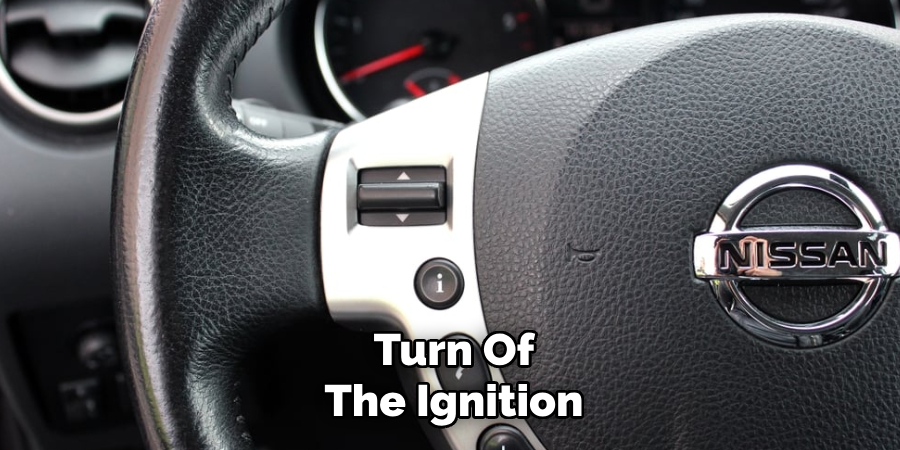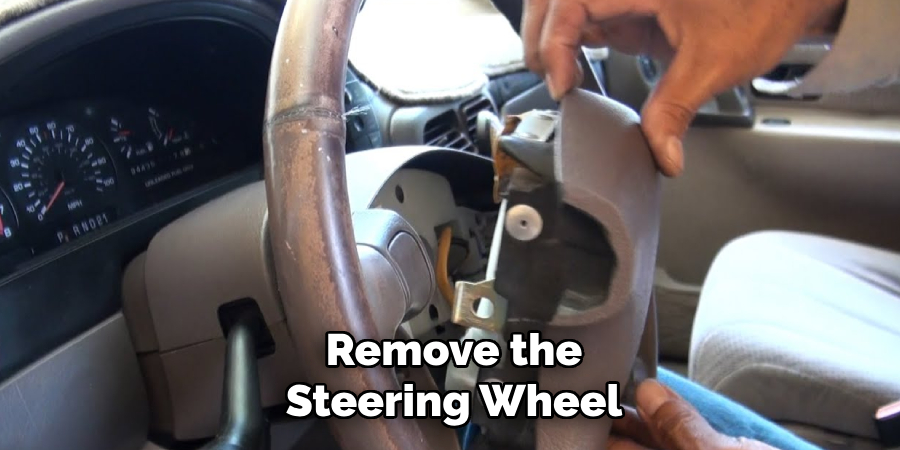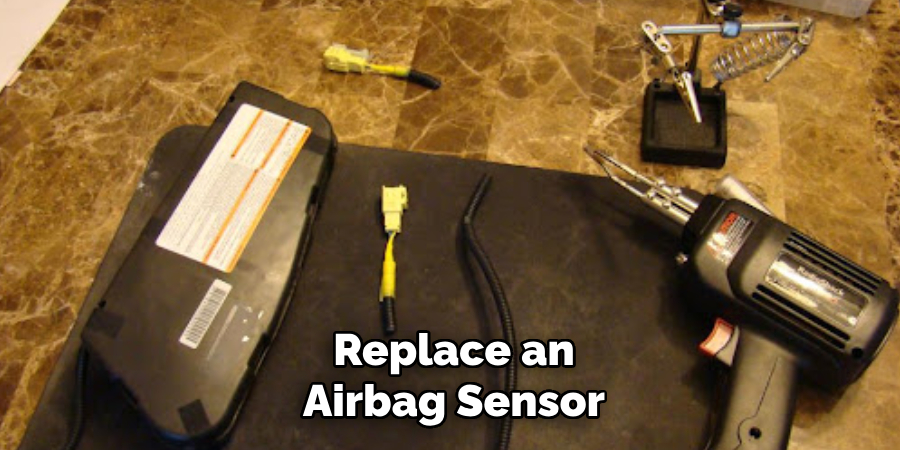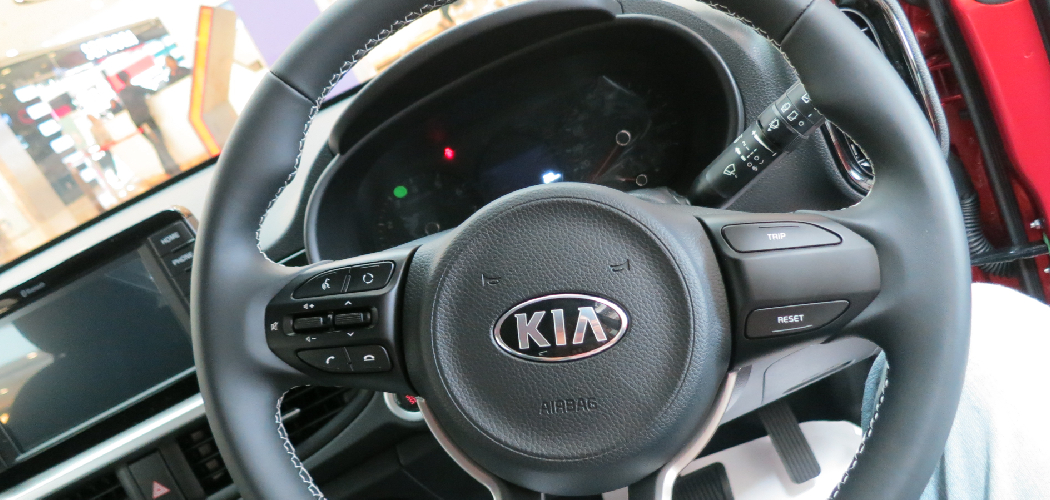Are you wondering how to reset your airbag sensor? No worries, you have come to the right place.
Resetting an airbag sensor is an essential task that may become necessary after an airbag deployment or when a vehicle’s warning light is illuminated. The airbag sensor, a critical component of a car’s safety system, helps detect collisions and deploys the airbags to protect passengers. However, a malfunctioning or incorrectly calibrated sensor can compromise safety and cause unnecessary alerts.

This guide on how to reset airbag sensor will walk you through the steps to safely reset the airbag sensor, whether you are addressing a deployment event or troubleshooting a false warning light. Always follow safety precautions and consult your vehicle’s manual to ensure proper handling.
What Are the Causes of a Faulty Airbag Sensor?
There are several reasons why your airbag sensor may be malfunctioning, including:
- Electrical Issues: A damaged or corroded wiring harness can disrupt the signal between the airbag sensor and the control module.
- Physical Damage: Accidents or rough handling of the vehicle can damage the airbag sensor, causing it to malfunction.
- Low Battery Voltage: If your car battery is low on charge, it may not provide enough power for the airbag sensor to function correctly.
- Water Damage: Exposure to moisture or water can cause corrosion and affect the performance of the airbag sensor.
If you are experiencing any of these issues, addressing them as soon as possible is essential to ensure the proper functioning of your vehicle’s airbags.
What Will You Need?
In order to properly maintain your car’s airbags and ensure their proper functioning, you will need a few things. These include:
- Owner’s Manual: This contains essential information about your vehicle, including resetting the airbag system and any warning signs or troubleshooting steps.
- Car Battery Charger: If your battery is low on charge, using a charger can help provide enough power for the airbag sensor to function correctly.
- Cleaning Products: In case of water damage or spills in your car, having cleaning products on hand can help prevent corrosion and further damage to the airbag sensor.
- Professional Mechanic: If you are unsure about any issues or warning signs related to your airbag system, it is best to consult a professional mechanic. They have the knowledge and experience to diagnose and repair any problems with your airbag sensor accurately.
8 Easy Steps on How to Reset Airbag Sensor
Step 1. Turn Off the Ignition
Before you begin the process, ensure your car’s ignition is completely turned off. This step is crucial to prevent any unintended electrical signals interfering with the resetting process. Leaving the ignition on while attempting to reset the airbag sensor may cause error codes to persist or create new ones. Additionally, it is a safety precaution to avoid accidental deployment of the airbags while working on the system. Double-check that all electrical components in the vehicle are off before proceeding to the next step.

Step 2: Locate the Airbag Sensor
To reset the airbag sensor, you must first locate it within your vehicle. The airbag sensor is usually situated near the front of the car, often behind the dashboard, near the center console, or under the driver’s or passenger’s seat. Refer to your vehicle’s user manual for the exact location, as this can vary depending on the make and model. Take extra care when accessing this area, ensuring you do not disturb other components or wiring around the sensor.
Step 3: Disconnect the Battery
Before proceeding with resetting the airbag sensor, it is crucial to disconnect the car battery to avoid any accidental deployments or electrical issues. Start by turning off the ignition and removing the key from the car. Then, using a wrench, disconnect the negative terminal of the battery. Ensure the terminal is securely placed away from the battery to prevent it from making contact during the process. Wait 10-15 minutes after disconnecting the battery to allow the car’s electrical system to power down fully. This step ensures your safety as you work on the airbag system.
Step 4: Remove the Airbag Module

Locate the screws or bolts securing the airbag module to the steering wheel or dashboard, depending on your vehicle’s make and model. These fasteners are typically accessible from the backside of the steering wheel or behind a removable panel. Use the appropriate tools, such as a screwdriver or socket wrench, to carefully loosen and remove the fasteners. Once the fasteners are removed, gently lift the airbag module away from its housing. Be cautious not to tug on the connected wires or damage any components.
Step 5: Disconnect the Airbag Wiring Harness
With the airbag module lifted, locate the wiring harness connectors attached to the back of the airbag. These connectors are typically secured with clips or tabs. Carefully depress or release the locking mechanism on each connector to detach the wires. Take your time to ensure no damage occurs to the connectors or wires, as they are essential components of the airbag system. Once all connectors are safely disconnected, set the airbag module aside securely, away from direct heat or ignition sources.
Step 6: Remove the Steering Wheel
Locate the central nut or bolt securing the steering wheel to the steering column with the airbag module removed. Use a wrench or socket to carefully loosen and remove the nut or bolt carefully. Before attempting to pull the steering wheel off, ensure it is marked or aligned to maintain the correct orientation for reinstallation. You may need a steering wheel puller tool to safely detach it without causing damage. Once removed, place the steering wheel in a secure area.

Step 7: Disconnect the Steering Column Components
With the steering wheel removed, inspect the steering column for any additional components that need to be disconnected. This may include wiring harnesses, switches, or trim pieces. Carefully unplug any electrical connectors and remove screws or clips securing these components. Take note of their arrangement for proper reassembly. Place all removed parts in a labeled container to avoid misplacing them during reinstallation.
Step 8: Remove the Steering Column
Once all components have been disconnected, locate the mounting bolts or brackets securing the steering column to the vehicle’s frame. Use the appropriate tools to loosen and remove these bolts carefully. Support the steering column as you detach it to prevent damage or strain on its remaining connections. Once free, gently lower and remove the steering column from the vehicle. Inspect the column for any wear or damage before proceeding with further steps.
By following these steps, you can effectively and safely remove the steering column from your vehicle.
5 Things You Should Avoid
- Ignoring the Vehicle Manual: Always consult the vehicle’s manual before resetting the airbag sensor. Skipping this step can result in incorrect procedures and potential system malfunctions or safety risks.
- Disconnecting the Battery Improperly: Never attempt to reset the airbag sensor without disconnecting the battery correctly. Failing to do so might cause electrical issues or accidental airbag deployment, posing a serious hazard.
- Using Unverified Tools: Avoid using non-recommended or unverified tools to reset the airbag sensor. These tools may not be compatible with your vehicle’s system and could cause further damage.
- Ignoring Error Codes: Do not proceed with resetting the sensor without first diagnosing the exact cause of the issue. Ignoring error codes might mask underlying problems that need to be addressed.
- Rushing the Process: Resetting the airbag sensor requires patience and precision. Rushing through the process can lead to errors that compromise the safety and functionality of the airbag system. Take your time and follow each step carefully to ensure successful results.
When Should You Replace an Airbag Sensor?
There are instances when resetting the airbag sensor is not enough, and replacement is necessary. Here are some scenarios where you might need to replace your airbag sensor:

- Severe Collision: If your car has been involved in a severe collision, it is recommended to have all airbags and sensors replaced as a precautionary measure. Even if the airbags did not deploy, the impact from the crash may have damaged the sensors.
- Malfunctioning Sensor: If your airbag light continues to stay on even after resetting the sensor, there might be an issue with the sensor itself. In this case, it is best to replace the faulty sensor instead of constantly resetting it.
- Maintenance: It is essential to regularly maintain and check your airbag sensor for any signs of damage or malfunction. This can prevent potential issues and ensure the safety of you and your passengers in case of an accident.
- Proper Installation: When replacing an airbag sensor, it is crucial to make sure a certified technician properly installs it. Improper installation can lead to malfunctioning sensors and compromise the effectiveness of your airbags in case of a collision.
Conclusion
How to reset airbag sensor requires careful attention to ensure the proper functionality of your vehicle’s safety system.
First, consult your vehicle’s manual for specific instructions related to your car model. Disconnect the battery to prevent accidental airbag deployment during the process. Access the diagnostic tool or OBD-II scanner to clear the fault codes and reset the sensor. It is highly recommended to seek assistance from a professional if you are unsure of the process to avoid mishandling.
Ensuring the reset is performed correctly is essential for the reliable deployment of your airbag system in an emergency.

